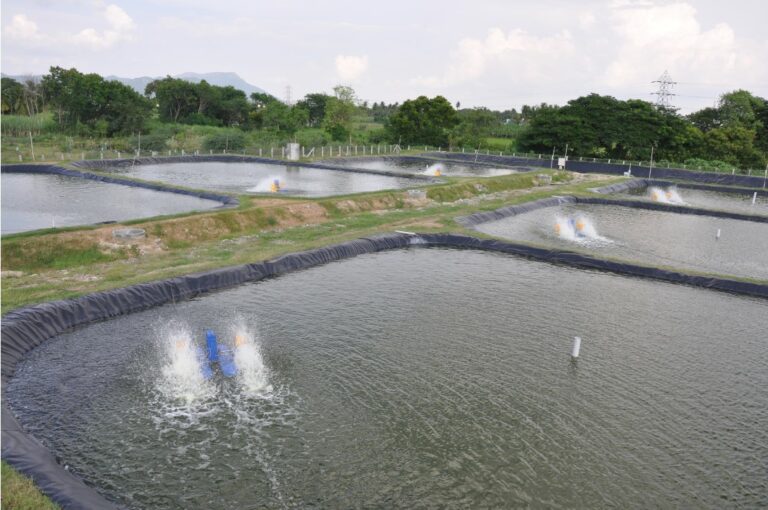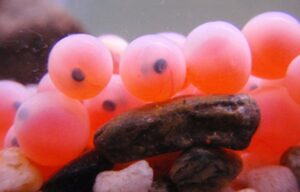This month’s article will target the amazing news that we received in May! Bionomous was selected to receive the support of Innosuisse in the frame of the Swiss Accelerator. Our project AQUASORTER (Automation and QUAlity SORting Tools for thE aquacultuRe industry) will receive the necessary funding to adapt our current technology for the fish farms industry.
Our project focuses on the fish farms industry as there is a need to increase the efficiency of this industry to respond to a global demand. In fact, aquaculture is expected to provide over 70% (1) of fish production with an increased demand from 179M food fish to 220M tonnes in 2050 (2). One of the main bottlenecks in aquaculture is the stable production of high-quality juveniles to increase productivity and to spend less resources. With the AquaSorter we will provide high quality control of fish eggs and reduce the costs associated with malformations and diseases. This article explains the current situation regarding aquaculture and shows you the solutions that the AquaSorter will provide.
What is aquaculture?
Aquaculture is defined as the husbandry of aquatic organisms such as fish, crustaceans, molluscs or algae in fresh or salt water and under human control. Actually, world aquaculture production is surpassing fishing. The biggest aquaculture productor is China, which is producing more than the rest of the world combined (1,3). In 2008, the FAO (Food and Agriculture Organization) recorded 310 different species raised in aquaculture. In freshwater aquaculture, carps are dominant but for marine aquaculture, salmon is in first place (3).
For fishes, there exist two major aquaculture systems: inland aquaculture and coastal aquaculture. Inland aquaculture takes place in ponds, lakes, tanks or sometimes also in rice culture. Ponds could be artificial or natural and if it’s a natural one, cages are used to prevent fish from disturbing the pond biodiversity. Concerning rice-fish culture, it is expanding a lot in Asia because of higher productivity and reduced impact on the environment (1,3). Rice-fish culture is the simultaneous culture of rice and fish and represents a good option to increase food production from limited land. In Asia, crucian carp is mainly used for this aquaculture system. Higher productivity in paddy fields is due to the fertilizing effect from fish excrement (4).


Coastal aquaculture is practiced in artificial structures in areas adjacent to the sea and in connection to it or directly in the sea with the use of cages. A major advantage of the cages is an open exchange of water which provides oxygen and removes waste (3).

The current method to assess the fish egg quality in aquaculture
Controlling the quality of eggs is really important for the health of livestock. Indeed, a bad quality egg or a dead embryo can lead to bacterial or fungal diseases and increase various costs such as feeding or costs for treatments.
The general approach in hatcheries is hand-based. First, death eggs are separated manually by siphoning out and after, a dozen eggs are placed under a microscope to check the quality of the eggs. This manual sorting of embryos is not standardized, time-consuming and with an error margin of 10%, leading to up to 20% of eggs with malformations. This leads to up to 20% waste of feed, high probability of bacterial infestations and use of additional drugs, and batch loss, implying higher costs.
In the salmonids industry, an automatic egg selection has been a standard for more than 40 years due to its many advantages. However, the technology used for salmonids cannot be applied to many of the new species that are farmed nowadays. The difference between salmonid and other farmed fish, such as seabass, bluefin tuna, seabream, pikeperch, etc., is the egg size.


In fact, salmonid eggs are 5-6x bigger than others. Because of this size difference, it is impossible to use the same egg sorters. The sorters used in the salmonid industry use infrared detection or imaging processing technologies and a tapered wheel to sort viable eggs. For smaller eggs, specific microfluidics are required.
The AquaSorter
Bionomous will bring its experience in the microfluidic and AI field to develop the AquaSorter, a technology to sort the eggs of more than 40% of the fish farmed species worldwide, which have an egg size in between 1 – 2 mm.
The AquaSorter will continuously screen, sort and dispense into containers the fish eggs at a throughout that is adapted to the aquaculture industry. This technology will be able to detect if eggs are fertilized, if they have any malformations and to classify them with a higher accuracy (95-99%) than doing the sorting by hand (80%).
As a reminder, removing bad eggs will reduce bacterial and fungi infection. By detecting and removing these unwanted eggs, it will reduce the number of antibiotics and treatment used, which can also affect good egg viability. So with the AquaSorter the productivity rate will increase up to 20%.
Another major advantage is that it will be possible to personalize the classification algorithms according to specific needs. This makes the AquaSorter adaptable to all fish cultures.
Conclusion
There is a noticeable increase in the demand for food, including fish spawn. Aquaculture has a majority position in the supply of fish but current methods for processing eggs are not appropriated for this growing demand.
By automating the egg sorting, we will help to maximize hatching and healthy growth, thus minimizing time and costs. The AquaSorter will contribute to 1) standardizing the quality control of fish eggs in hatcheries, 2) increasing survival rates, 3) increasing production profitability from reducing hatchery labour costs , reducing feed costs , and increasing production.
The Innovation project Swiss Accelerator is supported by Innosuisse.
References
- The State of World Fisheries and Aquaculture 2020 [Internet]. FAO; 2020 [cited 2023 May 24]. Available from: http://www.fao.org/documents/card/en/c/ca9229en
- Merino G, Barange M, Blanchard JL, Harle J, Holmes R, Allen I, et al. Can marine fisheries and aquaculture meet fish demand from a growing human population in a changing climate? Glob Environ Change. 2012 Oct;22(4):795–806.
- Bostock J, McAndrew B, Richards R, Jauncey K, Telfer T, Lorenzen K, et al. Aquaculture: global status and trends. Philos Trans R Soc B Biol Sci. 2010 Sep 27;365(1554):2897–912.
- Tsuruta T, Yamaguchi M, Abe S ichiro, Iguchi K. Effect of fish in rice-fish culture on the rice yield. Fish Sci. 2011 Jan;77(1):95–106.
- Fisheries Department – Tamil Nadu [Internet]. [cited 2023 May 26]. Available from: https://www.fisheries.tn.gov.in/InlandFisheries
- Jagdish. Integrated Rice and Fish Farming Information [Internet]. Agri Farming. 2016 [cited 2023 May 26]. Available from: https://www.agrifarming.in/rice-fish-farming
- Van Can N, Anh Tuan P. Marine fish farming in Vietnam [Internet]. Global Seafood Alliance. 2012 [cited 2023 May 26]. Available from: https://www.globalseafood.org/advocate/marine-fish-farming-in-vietnam/
- Ontogeny [Internet]. Migratory behavior in pacific salmonids. [cited 2023 May 26]. Available from: http://bio342-salmonmigration.weebly.com/ontogeny.html



